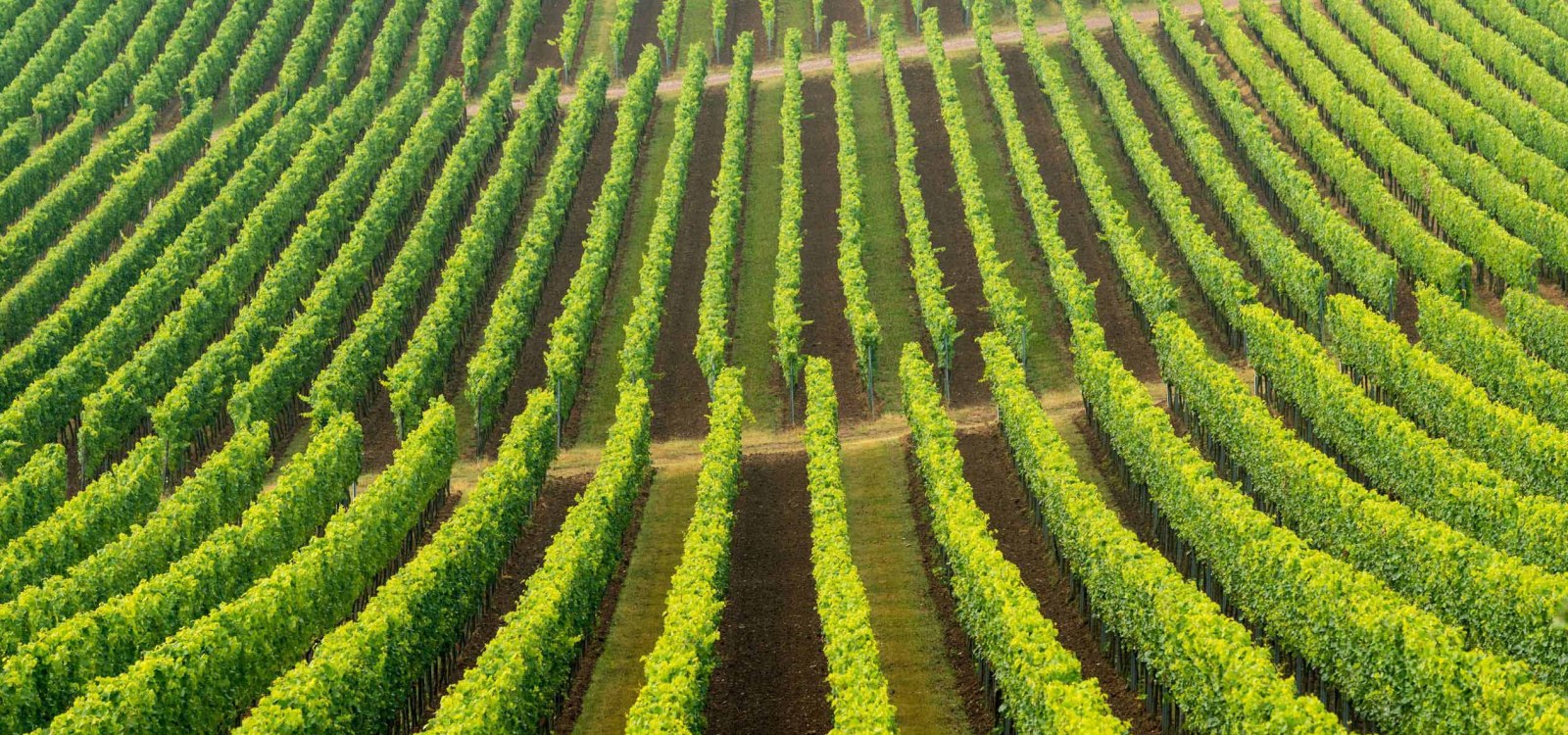
searchMenu



Fire and flame for great wines The single vineyard site "Flomborner Feuerberg" with its south-south-west orientation is indeed very sunny. The soil, consisting of sandy loam and above all limestone, stores heat very well. Therefore the name of the single vineyard does not come as a surprise. At night, however, everything cools down, as the vineyard has an altitude of 250 metres. Different varieties thrive here, such as Riesling, Pinot and Silvaner. Incidentally, the name of the village "Flomborn" does not come from the word "Flamme". It…

Of mountains, seas and grape varieties There are more than 30 kilometres between the village of Flonheim - in the middle of Rheinhessen - and the town of Bingen directly by the river Rhein. There are two possible interpretations of where the name comes from: The name could refer to the ownership of the Bingen Spital in the 14th century. Or a geological explanation: the Binger Berg - as we call it today - was formed over 30 million years ago. At that time, large parts of Rheinhessen were flooded by the primeval sea and one of the surf reefs…

Resting at the Trullo There are two possible names here, but they are not mutually exclusive: The name of the single vineyard could come from the old German word "Rode" and mean "deserted". Deserted sites are abandoned settlements or farmland. Flonheim is known - apart from viticulture - for its sandstones, and the vineyard is located in the immediate vicinity of these sandstone quarries. The vines grow here mainly on loess, but also on Rotliegendem/Rigosol. Could the red soil pigments maybe be responsible for the name? The Adelberg rises in…

Standing out Framersheimer Hornberg, Ingelheimer Horn, Siefersheimer Goldenes Horn. The vineyard name with the suffix "Horn" is popular because it denotes protruding corners of a plateau. But there is ony thing that only Framersheim has: a 7-way labyrinth on the eastern tip of the Horn, built from 350 tonnes of limestone boulders. The curves there go back and forth, but never astray. At a height of about 280 metres, you can enjoy the view of the Odenwald (east), Kloppberg (south), Donnersberg (west) and Taunus with the Rhine plain (north).…

Roots deep in the rock There are only few cultivated plants that grow as well on rock as the vine. Its powerful roots can penetrate metres deep. The single vineyard "Frei-Laubersheimer Fels" takes its name - of course - from the geological conditions. Clay marl and loess meet rhyolite and quartz porphyry rock. The wines, whether white or red, are characterised by the minerality of the rock and have a very good ageing potential. Frei-Laubersheim is known for its half-timbered idyll. The Eichelberg Hiwweltour leads past the village. However,…

With momentum "nuff and runner" again Rheinhessen and its mountains: Granted, they are small mountains. But if you ride from Weinolsheim to Friesenheim and then back up to Köngernheim, your ears may well fall. Cyclists definitely feel the wind. The people of Rheinhessen would say: "You ride ruff (up) and runner (down) again". In this respect: Mountain accepted as a term in the lagenname. The camp name is based on a mountain path located in the immediate vicinity. Friesenheim lies in the valley, the small river Selz leads through the…

Geographical center of Rheinhessen Where is the center of Rheinhessen? Somewhere in Alzey! Almost. Since 2007 we know it exactly: The geographical center is in Gabsheim in a corridor, which has the old beautiful name "An des Adams Apfelbaum". Tables, benches and information boards invite you to take a break and enjoy the view. The single vineyard Gabsheimer Rosengarten is - unusually - not a contiguous area, but rather fragmentary. The name Rosengarten could refer to a natural growth. However, the name often points to early medieval…

As valuable as gold: mineral Rieslings No, you cannot mine for gold here. Unless you are a winegrower. Because the vines from this single vineyard produce great wines. The name does not actually refer to a precious metal, but to the general appreciation of the soil. Heavy, sandy loam soils mix with lime marl and calcareous clay. This gives the Riesling in particular an unmistakable minerality and tension. In October, the people of Gau-Algesheim invite you to the "Fest des Jungen Weines" (engl. Festival of young wine”) on the market…

Cheers, neighbours! With plenty of wines Across the river Rhein from Gau-Algesheim lies the former Benedictine monastery of Johannisberg in Rheingau. The basilica is dedicated to "John the Baptist". The monks owned vineyards in what is now Gau-Algesheim and also named the single vineyard site after their patron saint. The soils of the single vineyard site are diverse: from very chalky marl soils to very fertile loess soils. Fine fruity white wines such as Riesling, Pinot Blanc and Pinot Gris, Chardonnay, Kerner and fruity rosé…

The naming of this location indicates an old clearing area.
Rheinhessenwein e.V.
Otto-Lilienthal-Straße 4
55232 Alzey
E-Mail: info@rheinhessenwein.deRheinhessenwein e.V.
Otto-Lilienthal-Straße 4
55232 Alzey
E-Mail: info@rheinhessenwein.de